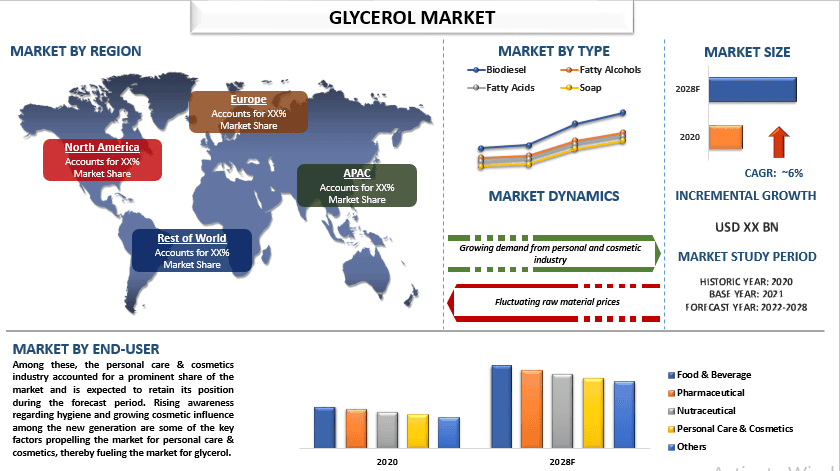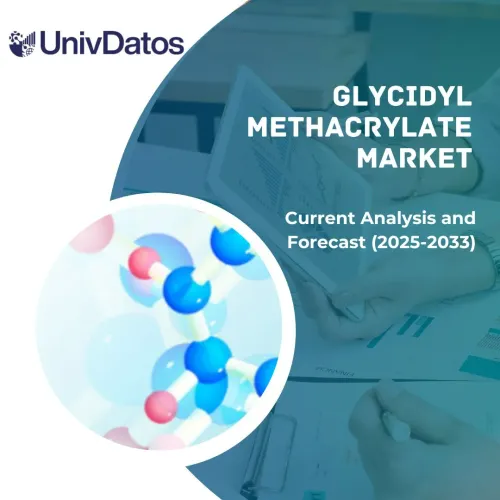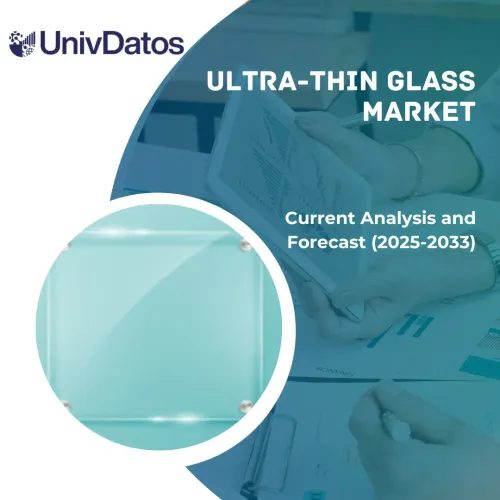- Home
- About Us
- Industry
- Services
- Reading
- Contact Us
Glycerol Market: Current Analysis and Forecast (2022-2028)
Emphasis on Source (Biodiesel, Fatty Alcohols, Fatty Acids, and Soap); Type (Crude and Refined); End-User (Food & Beverage, Pharmaceutical, Nutraceutical, Personal Care & Cosmetics, and Others); Region and Country

The global glycerol market is likely to showcase a growth of around 6% during the forecast period. The myriad properties of glycerol make it one of the crucial raw materials in the manufacturing of processed food & beverage, nutraceuticals, pharmaceuticals, and beauty and personal care products. For instance, glycerol is used as an emollient, humectant, solvent, and lubricant in many products in the personal care industry such as toothpaste, mouthwashes, shaving cream, and soaps. Furthermore, due to its hygroscopic properties glycerol is used in the pharmaceutical industry to prevent the drying of creams and ointments. It is also sprayed on tobacco to prevent disintegration due to dryness. As a result, the large and growing market for the aforementioned industries owing to the rising population, disposable income, changing lifestyle, and growing urbanization is transforming the entire landscape, eventually boosting the demand for glycerol.
Insights Presented in the Report
“Amongst sources, biodiesel category is likely to showcase robust growth during the forecast period”
Based on source, the market is categorized into biodiesel, fatty alcohols, fatty acids, and soap. Among these, the biodiesel category is likely to showcase robust growth owing to the increased output of biodiesel as consumers are shifting towards sustainable alternatives to conventional fossil fuels. Glycerol is produced in the conversion of oils to biodiesel, thus with increasing production of biodiesel, the supply of glycerol would increase as well.
“Amongst type, refined category held a prominent position in the market in 2020”
Based on type, the market is categorized into crude and refined glycerol. Among both, the refined category accounted for a significant share of the market owing to its utilization in a large number of industries like food & beverage, personal care & cosmetics, pharmaceutical, and nutraceutical, as it meets the USP certification requirement.
“Asia-Pacific is likely to showcase significant growth during the forecast period”
For a better understanding of the market adoption of Glycerol, the market is analyzed based on its worldwide presence in the countries such as North America (the United States, Canada, Rest of North America), Europe (Germany, the United Kingdom, France, Italy, Spain, and Rest of Europe), Asia-Pacific (China, Japan, India, and Rest of Asia-Pacific), and Rest of World. The Asia-Pacific region is likely to showcase robust growth over the forecast period owing to bolstering growth in end-use industries of the regional economies due to rising internal consumption and increasing export of final products from the regional countries. For instance, according to ASSOCHAM and MRSS, the Indian nutraceutical industry is likely to showcase a growth of around 21% between 2020-2025 to reach $18 billion by 2025. Further, government policies by several regional economies to lure companies to invest in the region is likely to set up a greater number of manufacturing facilities in the region, thereby fueling the market for glycerol.
Reasons to buy this report:
- The study includes market sizing and forecasting analysis validated by authenticated key industry experts
- The report presents a quick review of overall industry performance at one glance
- The report covers an in-depth analysis of prominent industry peers with a primary focus on key business financials, product portfolio, expansion strategies, and recent developments
- Detailed examination of drivers, restraints, key trends, and opportunities prevailing in the industry
- The study comprehensively covers the market across different segments
- Deep dive country-level analysis of the industry
Customization Options:
The global glycerol market can further be customized as per the requirement or any other market segment. Besides this, UMI understands that you may have your own business needs, hence feel free to connect with us to get a report that completely suits your requirements.
Table of Content
Research Methodology for Global Glycerol Market Analysis (2020-2028)
Analyzing the historical market, estimating the current market, and forecasting the future market of glycerol, three major steps are undertaken to create and analyze its adoption across the globe. Exhaustive secondary research was conducted to collect the historical market numbers and estimate the current market size. Secondly, to validate these insights, numerous findings and assumptions were taken into consideration. Moreover, exhaustive primary interviews were also conducted, with industry experts across the value chain of the industry. Post assumption and validation of market numbers through primary interviews, we employed a bottom-up approach to forecast the complete market size. Thereafter, market breakdown and data triangulation methods were adopted to estimate and analyze the market size of segments and sub-segments of the industry pertains to. Detailed methodology is explained below:
Analysis of Historical Market Size
Step 1: In-Depth Study of Secondary Sources:
Detail secondary study was conducted to obtain the historical market size of glycerol through company internal sources such as annual reports & financial statements, performance presentations, press releases, etc., and external sources including journals, news & articles, government publications, competitor publications, sector reports, third-party database, and other credible publications.
Step 2: Market Segmentation:
After obtaining the historical market size of the glycerol market, we conducted a detailed secondary analysis to gather current market insights and share for different segments & sub-segments for major regions. The major segment is included in the report by source, type, and end-user. Further regional and country-level analyses were conducted to evaluate the overall adoption of glycerol globally.
Step 3: Factor Analysis:
After acquiring the historical market size of different segments and sub-segments, we conducted a detailed factor analysis to estimate the current market size of glycerol. Further, we conducted factor analysis using dependent and independent variables such as growing end-use industries and fluctuating raw material prices. A thorough analysis was conducted of demand and supply-side scenarios considering the increasing investment, top partnerships, mergers and acquisitions, business expansion, and product launches in the Glycerol industry.
Current Market Size Estimate & Forecast
Current Market Sizing: Based on actionable insights from the above 3 steps, we arrived at the current market size, key players in the global market, and market shares of each segment. All the required percentage shares split, and market breakdowns were determined using the above-mentioned secondary approach and were verified through primary interviews.
Estimation & Forecasting: For market estimation and forecast, weights were assigned to different factors including drivers & trends, restraints, and opportunities available for the stakeholders. After analyzing these factors, relevant forecasting techniques i.e., the bottom-up approach were applied to arrive at the market forecast for 2028 for different segments and subsegments across the major regions globally. The research methodology adopted to estimate the market size encompasses:
- The industry’s market size, in terms of value (US$) and the adoption rate of glycerol across the major markets
- All percentage shares, splits, and breakdowns of market segments and sub-segments
- Key players in the glycerol market. Also, the growth strategies adopted by these players to compete in the fast-growing market
Market Size and Share Validation
Primary Research: In-depth interviews were conducted with the Key Opinion Leaders (KOLs) including Top Level Executives (CXO/VPs, Sales Head, Marketing Head, Operational Head, Regional Head, Country Head, etc.) across major regions. Primary research findings were then summarized, and statistical analysis was performed to prove the stated hypothesis. Inputs from primary research were consolidated with secondary findings, hence turning information into actionable insights.
Split of Primary Participants by Stakeholders and Regions

Market Engineering
The data triangulation technique was employed to complete the overall market estimation and to arrive at precise statistical numbers for each segment and sub-segment of the global glycerol market. Data was split into several segments & sub-segments post studying various parameters and trends in the area of the source, type, and application.
The main objective of the glycerol market study
The current & future market trends of global glycerol were pinpointed in the study. Investors can gain strategic insights to base their discretion for investments on the qualitative and quantitative analysis performed in the study. Current and future market trends would determine the overall attractiveness of the market at a country level, providing a platform for the industrial participant to exploit the untapped market to benefit as a first-mover advantage. Other quantitative goals of the studies include:
- Analyze the current and forecast market size of glycerol in terms of value (US$). Also, analyze the current and forecast market size of different segments and sub-segments
- Segments in the study include the area of the source, type, and application
- Defined analysis of the regulatory framework for the glycerol industry
- Analyze the value chain involved with the presence of various intermediaries, along with analyzing customer and competitor behaviors of the industry
- Analyze the current and forecast market size of glycerol for the major countries
- Major regions/countries analyzed in the report include North America (the United States, Canada, Rest of North America), Europe (Germany, the United Kingdom, France, Italy, Spain, Rest of Europe), Asia-Pacific (China, Japan, India, Rest of Asia-Pacific), and Rest of World
- Company profiles of the Glycerol market players and the growth strategies adopted by them to sustain the growing market
Deep dive country-level analysis of the industry
Related Reports
Customers who bought this item also bought










